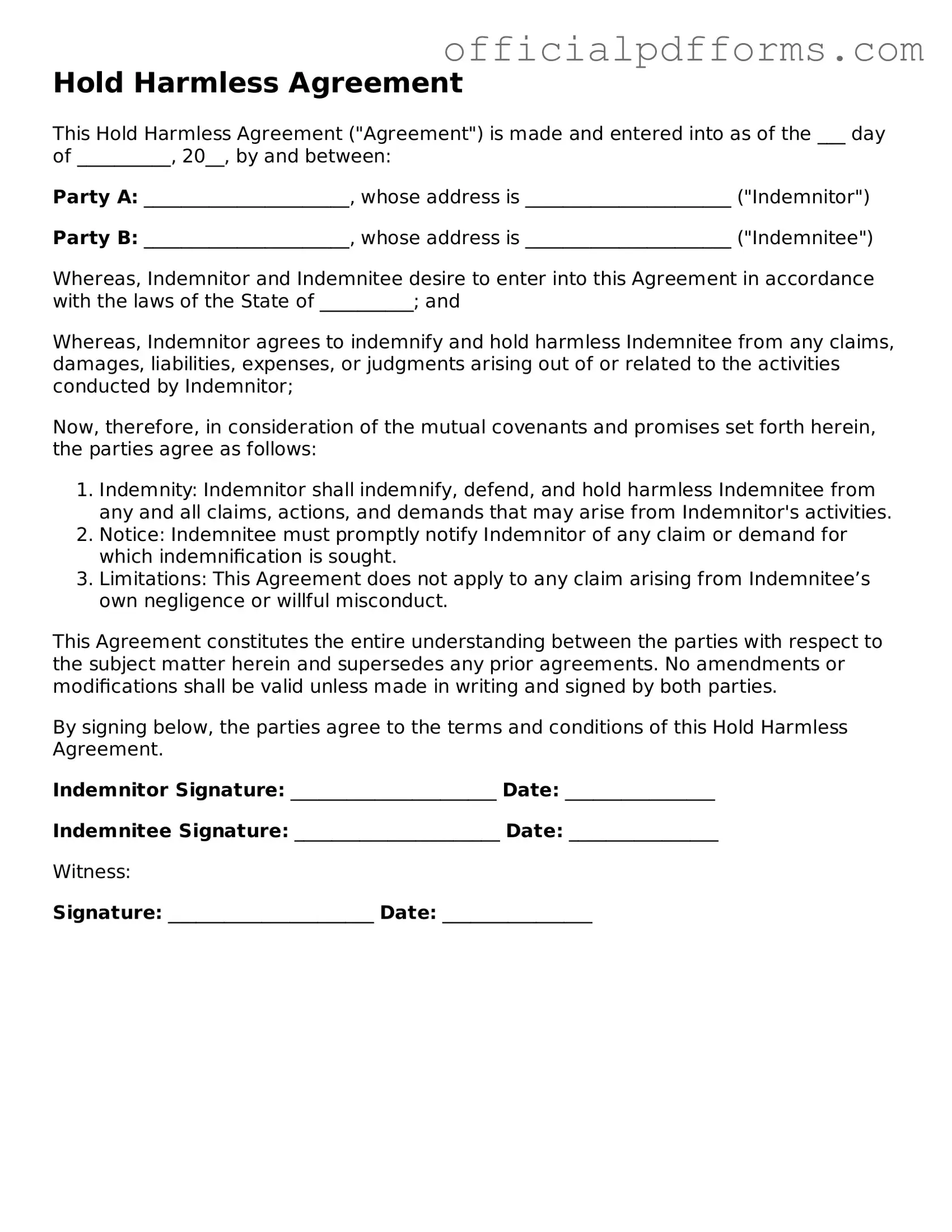Valid Hold Harmless Agreement Document
A Hold Harmless Agreement is a legal document designed to protect one party from liability or claims arising from the actions of another party. This form is commonly used in various situations, such as events, construction projects, or rental agreements, where risks are involved. Understanding its purpose and implications is crucial for anyone looking to safeguard their interests.
To ensure you are covered, consider filling out the Hold Harmless Agreement form by clicking the button below.
Access Form Online
